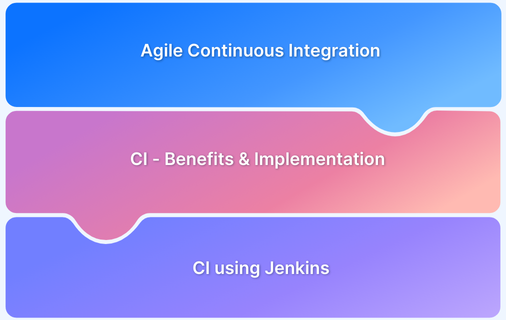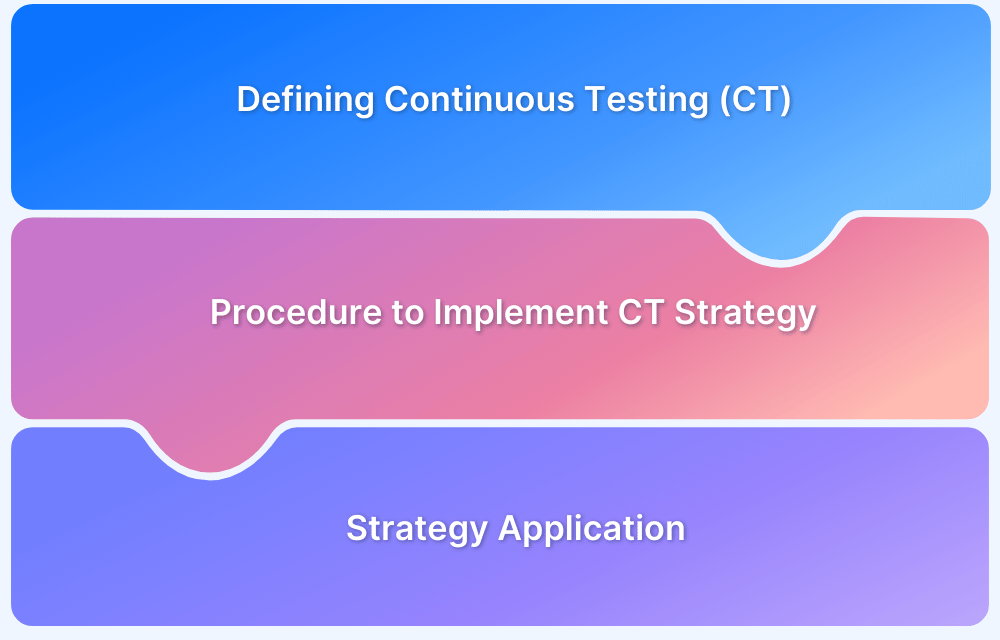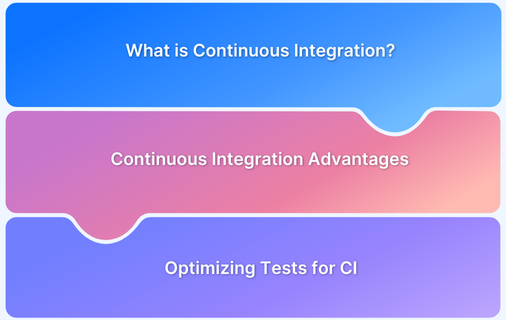Continuous monitoring in DevOps involves the real-time tracking of systems, applications, and processes to ensure they are performing as expected. Unlike traditional approaches, it offers continuous insights that help teams detect issues early, minimize downtime, and maintain a seamless user experience.
Overview
Continuous monitoring in DevOps refers to the real-time tracking of applications, infrastructure, and processes to identify and resolve issues proactively, ensuring smooth operations and performance.
Key Aspects of Continuous Monitoring in DevOps:
- Real-time performance tracking for proactive issue detection
- End-to-end monitoring across development, staging, and production environments
- Automated alerting for faster response to potential issues
- Log aggregation and analysis for deeper insights into system health
- Seamless integration with DevOps pipelines for continuous feedback and optimization
Benefits of Continuous Monitoring:
- Faster issue detection and resolution
- Improved system performance and uptime
- Enhanced collaboration between development and operations teams
- Reduced risk of downtime and business impact
- Data-driven insights for continuous improvement
This guide comprehensively overviews Continuous Monitoring in DevOps, its benefits, and best practices.
What is Continuous Monitoring in DevOps?
Fundamentally, Continuous Monitoring (CM), sometimes called Continuous Control Monitoring (CCM), is an automated process by which DevOps personnel can observe and detect compliance issues and security threats during each phase of the DevOps pipeline. Outside DevOps, the process may be expanded to do the same for any segment of the IT infrastructure in question. It helps teams or organizations monitor, detect, study key relevant metrics, and find ways to resolve said issues in real time.
Continuous Monitoring comes in at the end of the DevOps pipeline. Once the software is released into production, Continuous Monitoring will notify dev and QA teams in the event of specific issues arising in the prod environment. It provides feedback on what is going wrong, which allows the relevant people to work on necessary fixes as soon as possible.
Continuous Monitoring basically assists IT organizations, DevOps teams in particular, with procuring real-time data from public and hybrid environments. This is especially helpful with implementing and fortifying various security measures – incident response, threat assessment, computers, and database forensics, and root cause analysis. It also helps provide general feedback on the overall health of the IT setup, including offsite networks and deployed software.
Platforms like BrowserStack complement Continuous Monitoring efforts by allowing teams to test applications across real devices and browsers in real-world conditions. This ensures that any issues flagged during software monitoring can be validated and resolved quickly across the environments users experience.
Read More: DevOps Testing Strategy
Goals of Continuous Monitoring in DevOps
Here are the key goals of continuous monitoring:
- Enhance transparency and visibility of IT and network operations, especially those that can trigger a security breach, and resolve it with a well-timed alert system.
- Help monitor software operation, especially performance issues, identify the cause of the error and apply appropriate solutions before significant damage to uptime and revenue.
- Help track user behavior, especially right after an update to a particular site or app has been pushed to prod. This monitors if the update has a positive, negative, or neutral effect on user experience.
Types of Continuous Monitoring
Continuous monitoring can be categorized into different types based on what is being observed and analyzed:
- Infrastructure Monitoring: Monitors and manages the IT infrastructure required to deliver products and services. This includes data centers, networks, hardware, software, servers, storage, and the like. Infrastructure Monitoring collates and examines data from the IT ecosystem to improve product performance as far as possible.
- Application Monitoring: Monitors the performance of released software based on metrics like uptime, transaction time and volume, system responses, API responses, and general stability of the back-end and front-end.
- Network Monitoring: Monitors and tracks network activity, including the status and functioning of firewalls, routers, switches, servers, Virtual Machines, etc. Network Monitoring detects possible and present issues and alerts the relevant personnel. Its primary goal is to prevent network downtime and crashes.
Benefits of Continuous Monitoring
Primary benefits of continuous monitoring include:
- Better Network Visibility and Transparency: CM offers DevOps teams clarity on the state of the IT infrastructure by automatically collecting and analyzing data to reflect possible outages and important trends.
- Facilitates Rapid Responses: A primary aspect of CM is implementing an alert system that immediately notifies the right people the minute an IT incident emerges. This enables timely response to security threats or functional stop-gaps, minimizing damage and allowing faster restoration of the system to optimal operational levels.
- Minimizes System Downtime: Consistent system monitoring and quick, necessary alerts help maintain system uptime by raising the alarm when there is a service outage or any application performance issues.
- Assists with Healthy Business Performance: Reduction in system downtime also minimizes negative impact on customer experience, thus safeguarding the organization against losses in revenue or credibility. As mentioned before, Continuous Monitoring tools can also be used to track user reactions to software updates, which is useful for several teams – development, QA, sales, marketing, customer service, etc.
Risk Management and Continuous Monitoring
There are numerous tools for every stage of Continuous Monitoring in DevOps. However, before selecting tools, organizations, and DevOps teams must conduct adequate risk assessment and formulate a risk management plan. Developers can only implement an appropriate CM system after a thorough evaluation of compliance systems, governance, and risk factors. These tend to be quite different between organizations depending on their nature; e.g., a private company will have a different view of risk than a government organization.
To facilitate understanding of these metrics, consider asking the following question when looking for tools to implement CM:
- What is the extent of risk that the organization can withstand and recover from?
- What are the parameters by which to calculate risk?
- For each parameter, is it possible to assign values that denote the highest potential risk?
- What is the level of confidentiality required by the data collected and generated by the organization?
- What are the consequences of security breaches, hardware, or software failure?
Best Practices for Continuous Monitoring in DevOps
To maximize the impact of continuous monitoring, DevOps teams should follow these best practices:
- Define clear monitoring objectives: Identify which systems, metrics, and events need to be monitored based on business goals and risk tolerance.
- Monitor the full stack: Include application, infrastructure, network, and user experience monitoring to get a comprehensive view of system health.
- Integrate monitoring early in the pipeline: Embed monitoring from development through production to catch issues at every stage.
- Automate alerts and thresholds: Set automated, actionable alerts to notify teams of anomalies without overwhelming them with noise.
- Centralize logging and metrics: Use unified dashboards and log management tools to consolidate and analyze data from multiple sources.
- Regularly review and refine monitoring setup: Continuously update what you monitor as your systems evolve to avoid blind spots.
- Ensure cross-team visibility: Share monitoring data across development, QA, and operations teams to encourage collaboration and faster incident resolution.
Read More: Top 21 Monitoring Tools in DevOps
Testing and Continuous Monitoring in DevOps
Testing and continuous monitoring are tightly connected in DevOps, forming a feedback loop that ensures software remains reliable and high-performing from development through production.
While testing focuses on identifying bugs and verifying functionality before release, continuous monitoring tracks the application’s behavior in real time after deployment, detecting performance issues, security threats, and system failures.
Automated tests, such as unit, integration, and performance tests, are embedded throughout the CI/CD pipeline to catch issues early. Once the application is live, continuous monitoring steps in to observe metrics, logs, and user interactions, helping teams respond quickly to any anomalies.
The CM system notifies teams when errors occur in released software, which is valuable for maintaining software quality, but also adds to the workload of developers and QA engineers. After a product release, these teams often shift focus to new projects, so addressing production issues can strain their day-to-day operations and slow down overall development velocity.
This is where platforms like BrowserStack play a critical role. By enabling teams to run automated tests across real browsers and devices, BrowserStack ensures accurate pre-release validation. Its support for parallel testing significantly reduces test execution time, allowing teams to validate code changes faster and release more frequently.
Post-deployment, it helps teams quickly verify issues flagged by monitoring tools, allowing for faster resolution without disrupting ongoing work. This ultimately supports both software quality and team productivity.
Additionally, BrowserStack integrates seamlessly with popular CI/CD tools like Jenkins, GitLab, and CircleCI. It enables continuous testing as part of the pipeline and supports a truly automated DevOps workflow.
Conclusion
Continuous Monitoring intends to provide organizations with almost immediate feedback and insight into performance and interactions across servers, networks, and cloud environments, which is pivotal in enhancing operational, security, and business performance. It should be seen as an integral part of every DevOps pipeline, crucial to achieving efficiency, scalability, and better-quality product.






